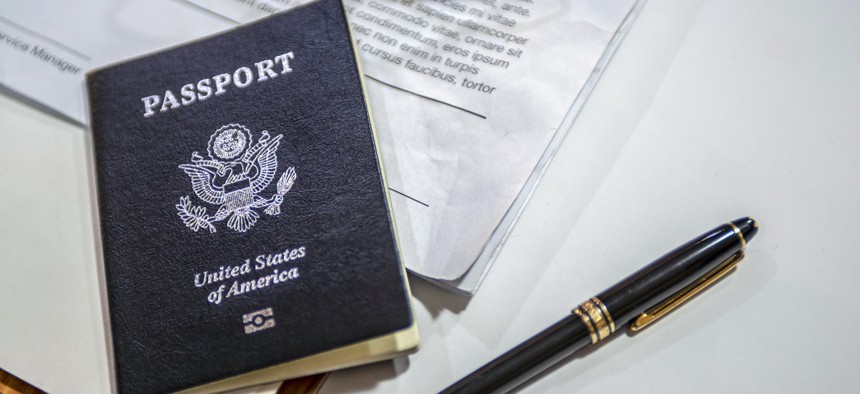
boonchai wedmakawand/Getty Images
Login.gov to add passports as identity proofing option
Trump appointees have called the in-house service a priority for anti-fraud efforts.
The government’s identity proofing and single sign-on tool, Login.gov, is adding passports as a way for people to prove that they are who they say they are online, the General Services Administration announced Wednesday.
Login.gov is required by many government agencies for people to access online benefits, accounts or information at agencies like the Social Security Administration. Over 50 federal and state agencies use the service, which has over 100 million user accounts.
Now, new users will be able to use a U.S. passport instead of a driver’s license or state ID card in the digital identity proofing process, which requires users to take a selfie for Login.gov to match against their ID photo. Login.gov offers in-person identity checks at certain post offices for some agencies if people can’t or don’t want to go through the online process.
GSA says that it will be using State Department passport records to verify people against their passports, a move that’s in line with the service’s goal to use more government authoritative record checks.
Although the government has a lot of data about people it could use in the identity proofing process, it largely doesn’t. Instead, it often turns to credit bureaus.
Login.gov will be connecting directly with the federal entity issuing the identity document — in this case, the State Department — to check it, GSA says. That’s as opposed to validating the document’s attributes through a third party provider, like a credit bureau.
“This collaboration exemplifies how Login.gov combines private sector document authentication technology with government authoritative record checks to deliver a user experience that enables easier and more accurate identity verification,” Login.gov Director Hanna Kim said at a Nextgov/FCW event this week.
The rollout of passports will happen in phases, GSA says, starting with passport books and eventually including passport cards and accepting passports in-person at post offices.
The agency says that the addition of passports could help Americans that don’t have other types of IDs. There are 170 million valid U.S. passports in circulation, and 94% of U.S. adults have either a license or a passport, according to GSA.
The agency is also working on adding mobile driver’s licenses as a verification option to Login.gov, Kim said this week. That move would take Login.gov from the physical realm — taking a photo of a document — to the digital.
“This is particularly exciting because it addresses both the increasing fraud and … accessibility challenges in the digital identity space,” she said. “While not a panacea, MDLs are cryptographically secure and designed for digital interactions, making them harder to fake. At the same time, they eliminate the need to photograph and send physical ID images, streamlining user experience and creating government efficiencies.”
Big-picture, the current type of ID proofing setup that Login.gov uses — where users take a photo of an ID and then take a selfie to compare the two — doesn’t always work well, testing at the Department of Homeland Security’s science arm has found. Sometimes these types of identity checks will block real people or let bad actors through the system.
There are also documented problems with equity, with some systems not working as well for people with darker skin, for example. The reliance on credit bureaus also comes with its own equity problems, as people with limited financial histories may not show up in the data.
Trump appointees at GSA have called Login.gov a priority for anti-fraud efforts as the government looks to prevent bad actors from using identity theft to defraud the government. The Government Accountability Office has estimated that the government loses up to $521 billion due to fraud annually, although this isn’t solely due to identity theft.
“Login.gov is at the forefront of the Administration’s efforts to create efficiencies and combat fraud, and initiatives like this are a great example of doing both,” Deputy Secretary of State for Management and GSA Acting Administrator Michael Rigas said in a statement.
The service has had a rocky path, coming under fire from GSA’s watchdog in 2023 for misleading agency customers about the identity proofing standards met by Login.gov.
Since then, Login.gov added facial recognition capabilities to come in line with that standard, despite previously making commitments not to do so without additional review because of equity concerns.







